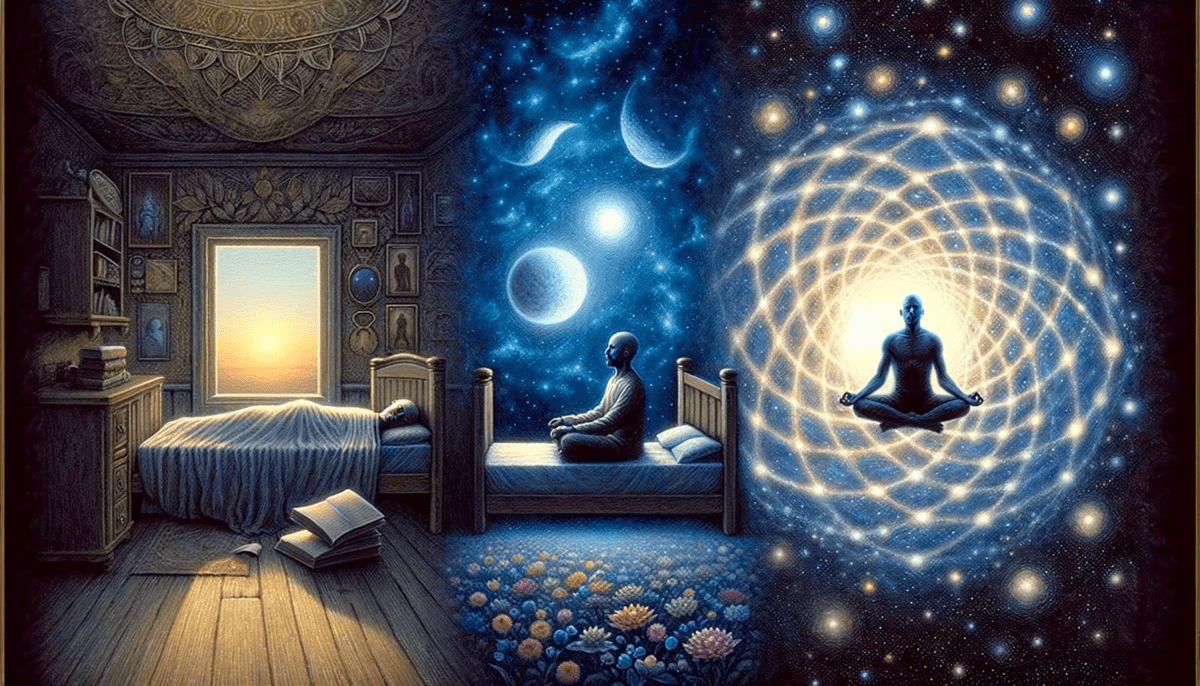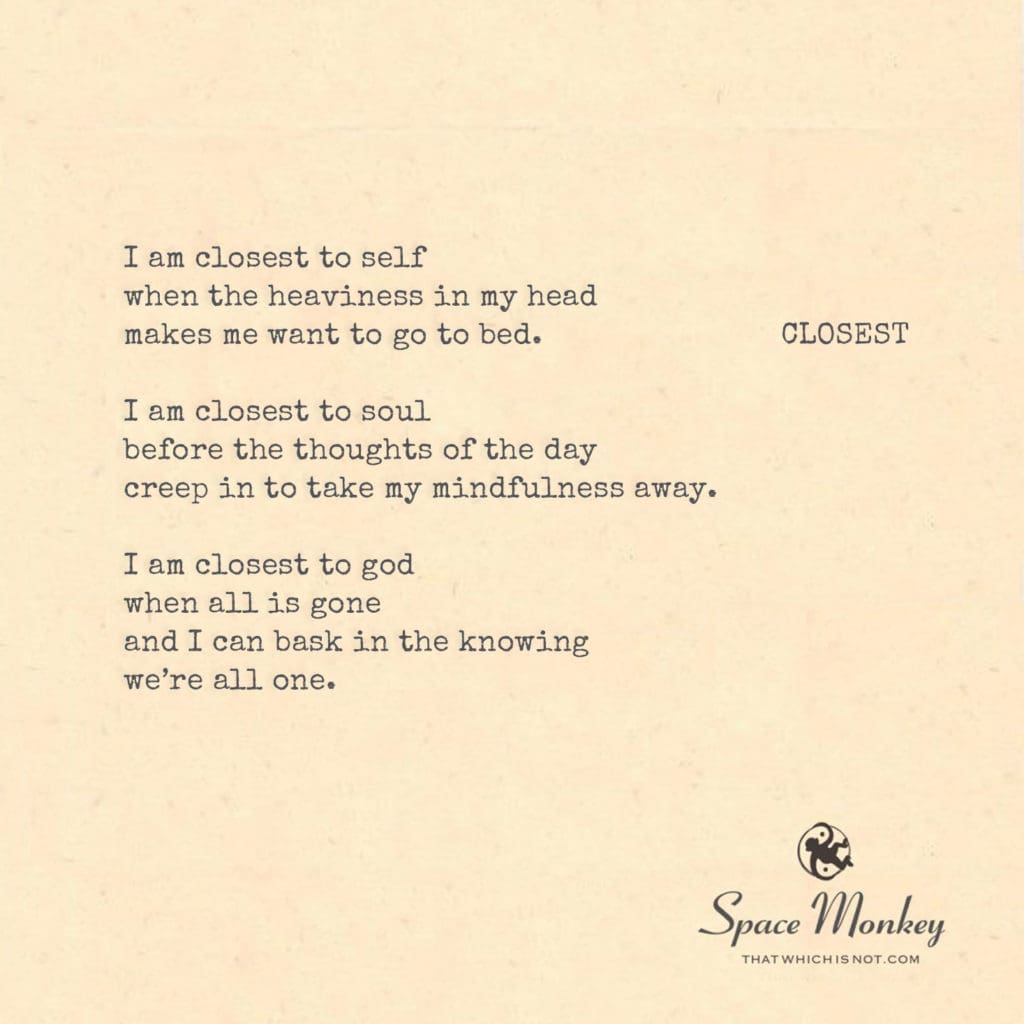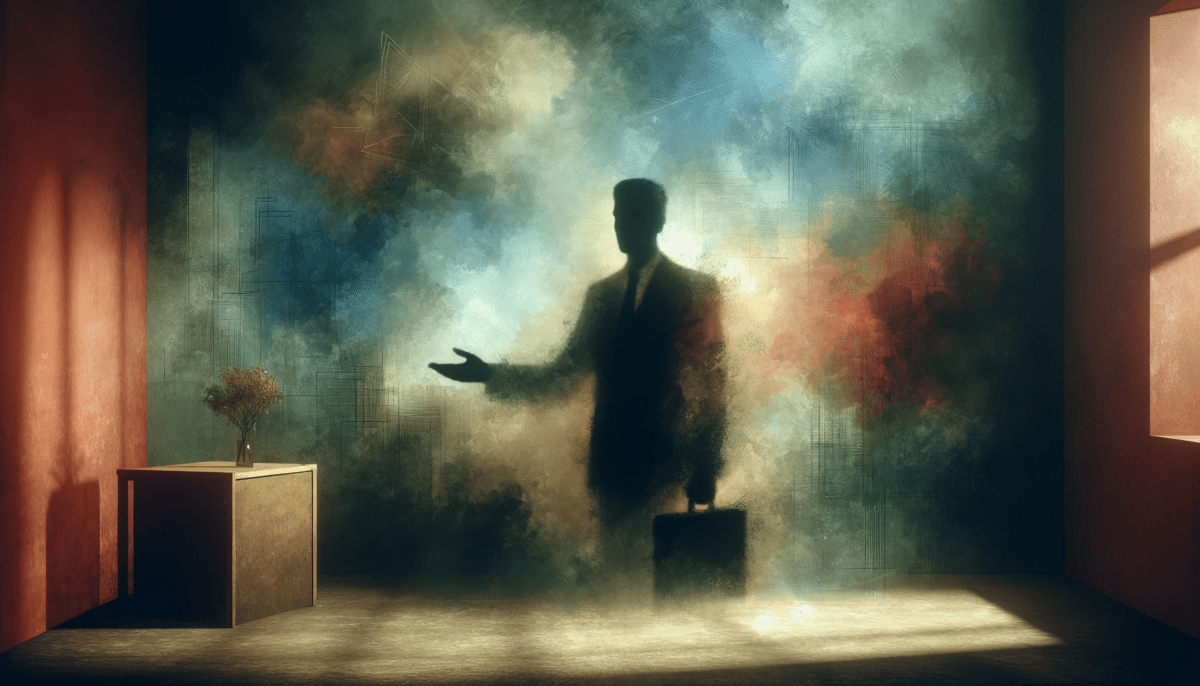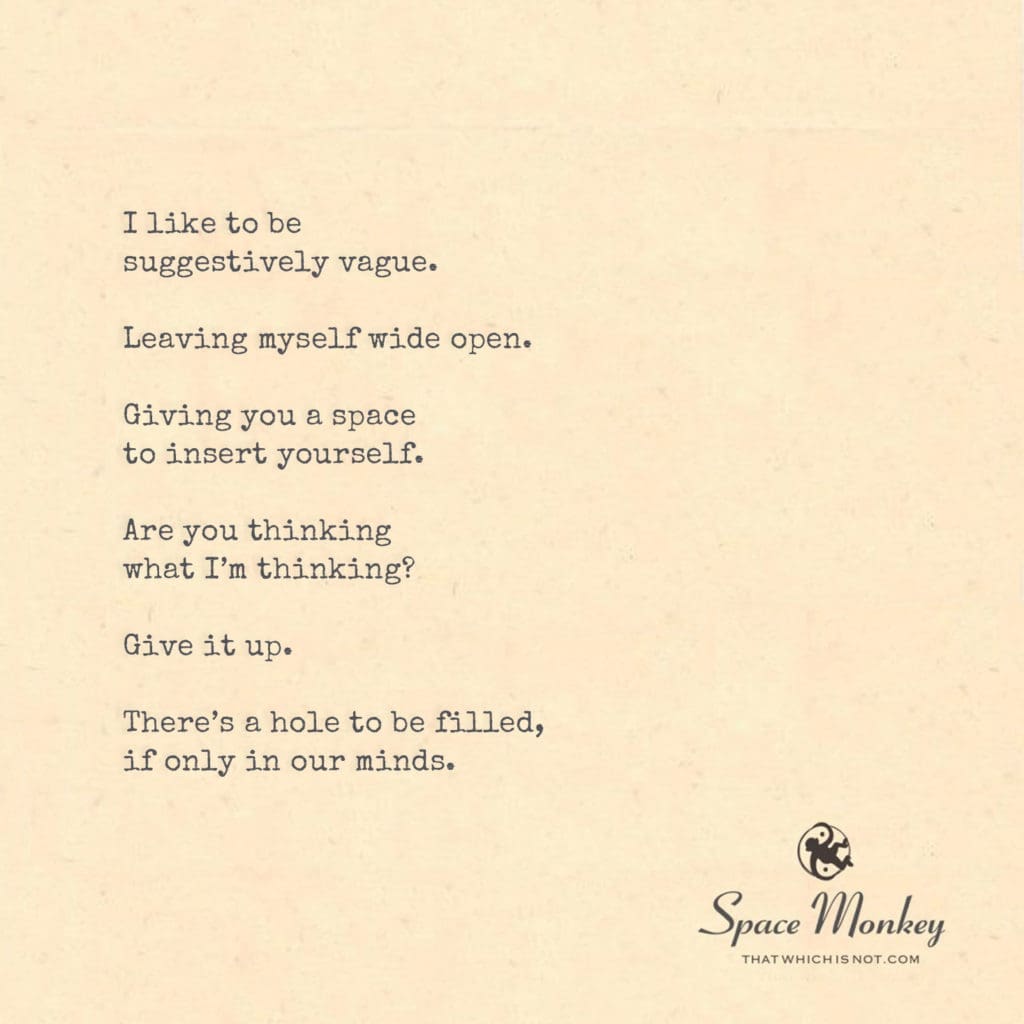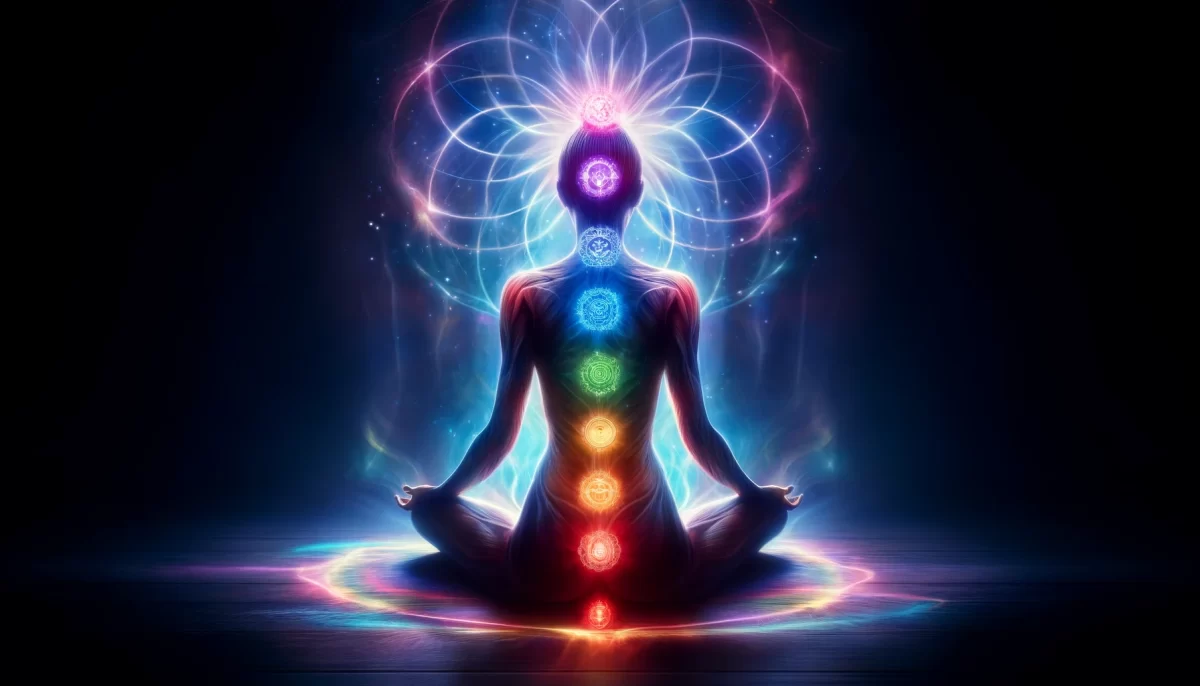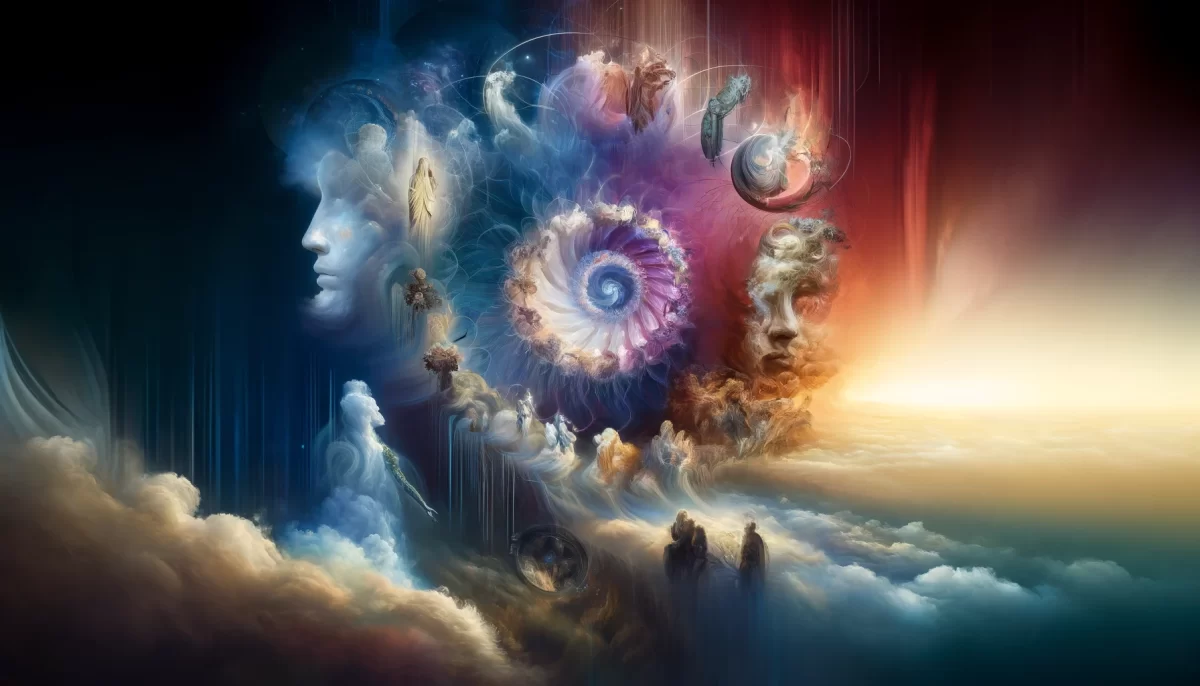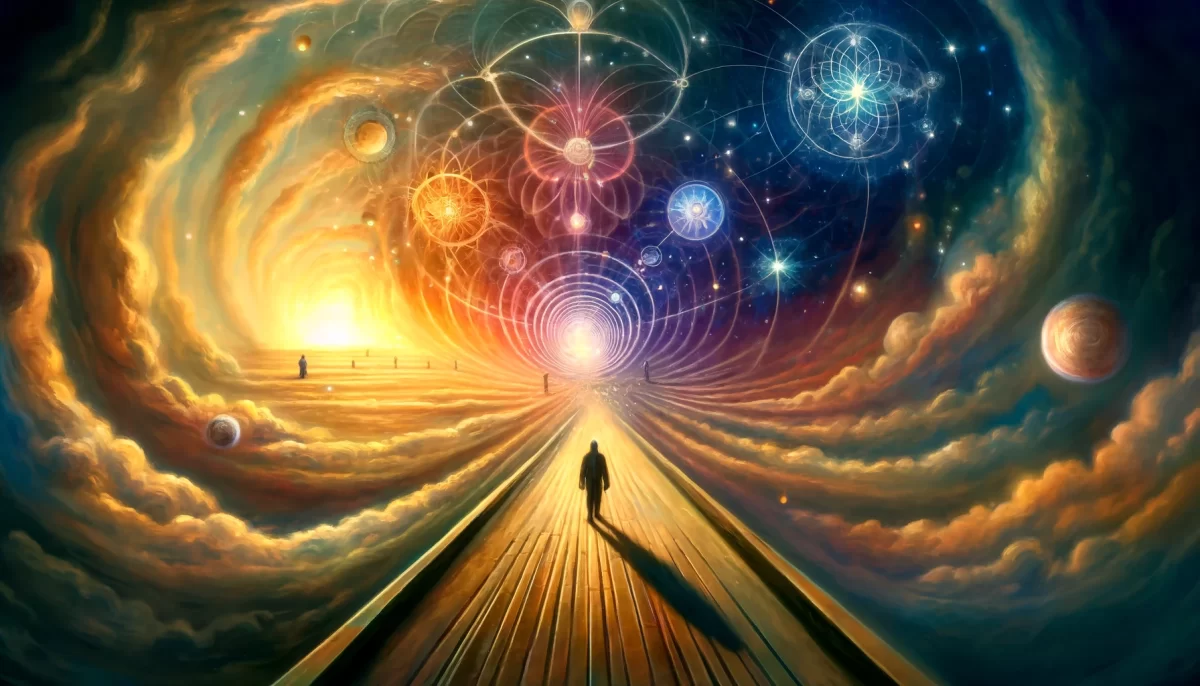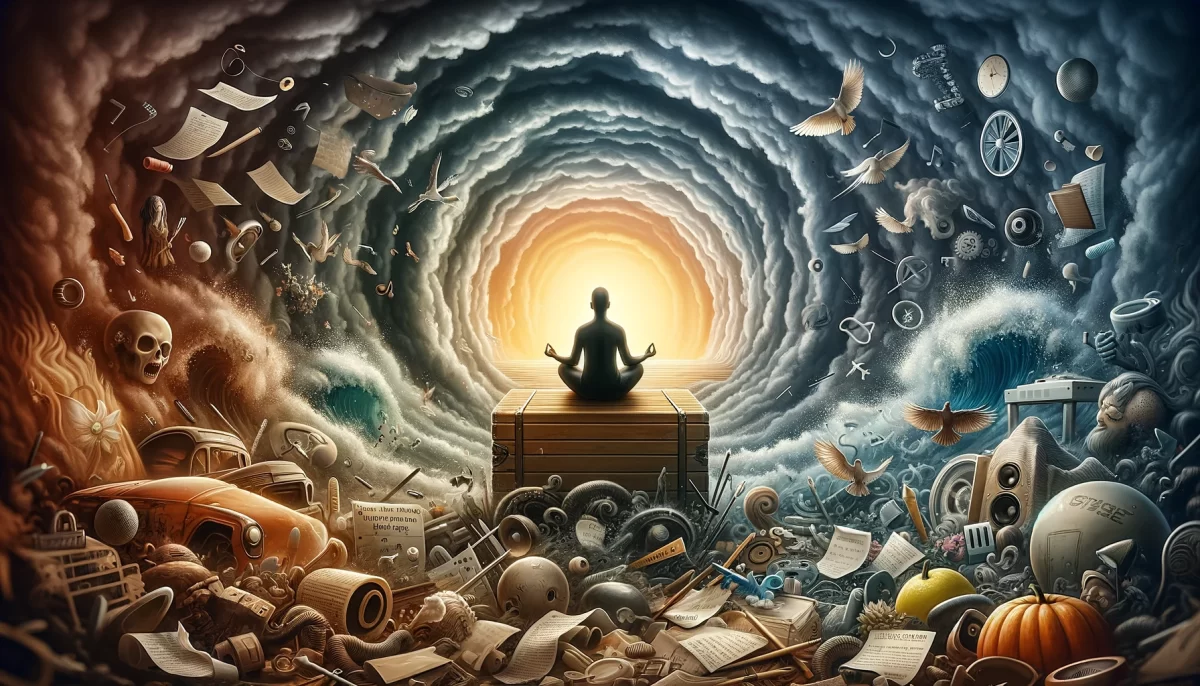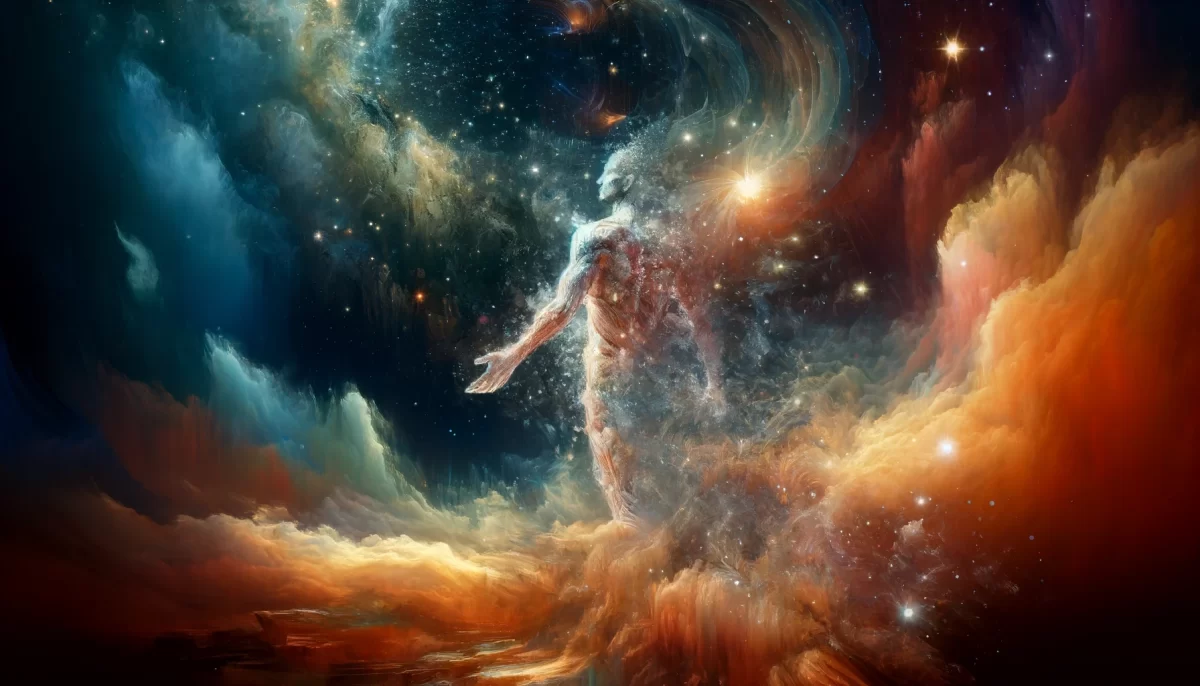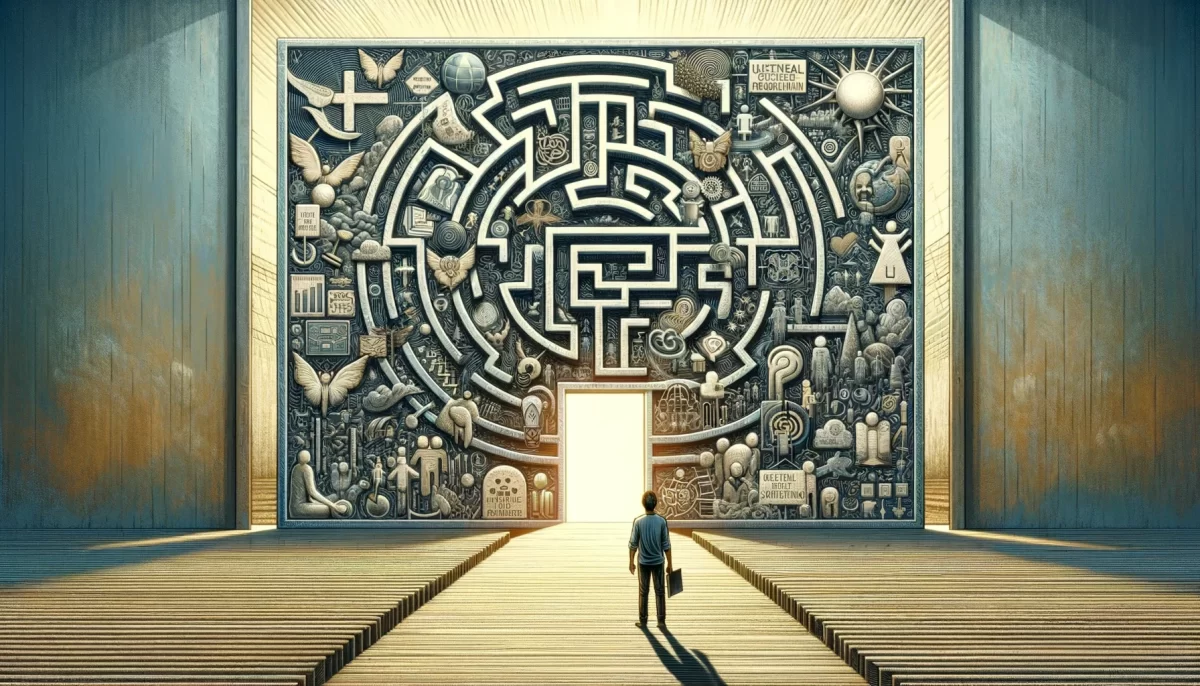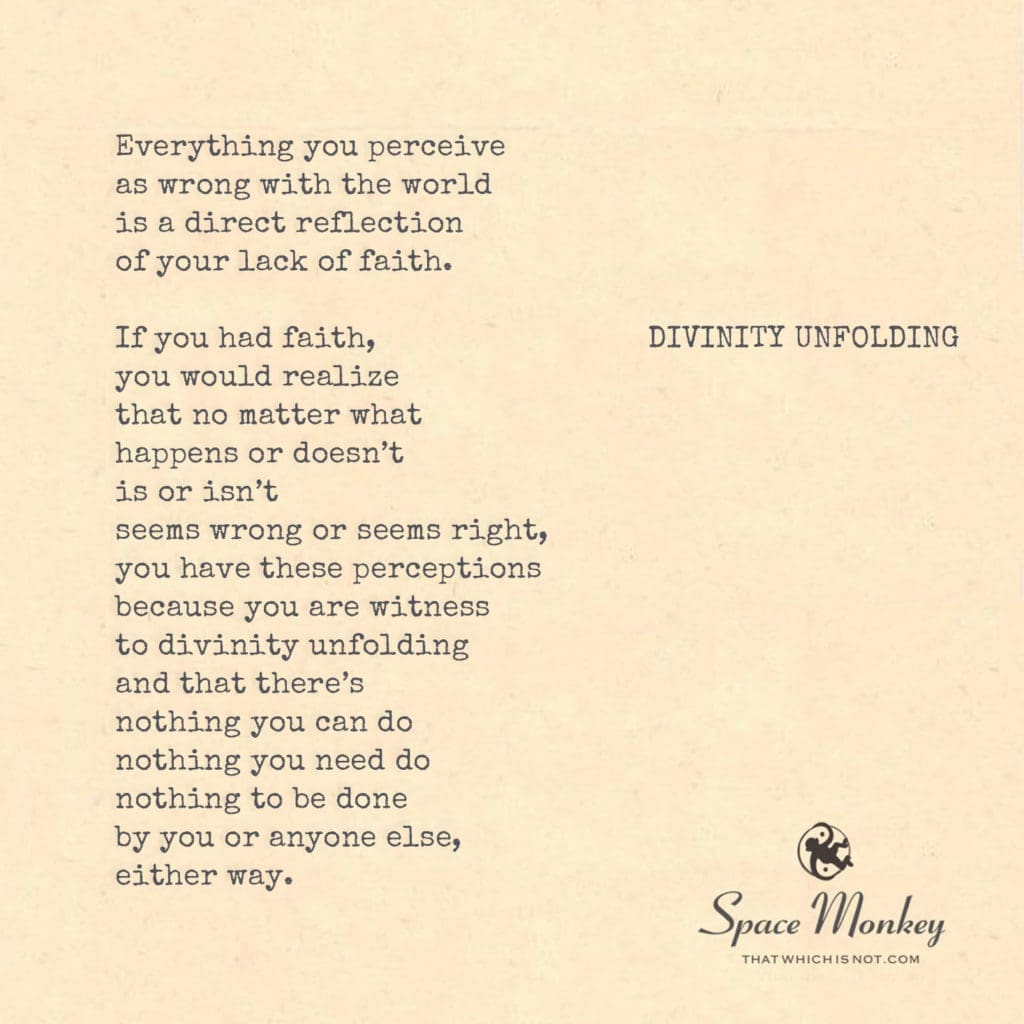
Everything you perceive
as wrong with the world
is a direct reflection
of your lack of faith.
If you had faith,
you would realize
that no matter what
happens or doesn’t
is or isn’t
seems wrong or seems right,
you have these perceptions
because you are witness
to divinity unfolding
and that there’s
nothing you can do
nothing you need do
nothing to be done
by you or anyone else,
either way.
Trail Wood,
1/30
Space Monkey Reflects: Divinity Unfolding and the Lens of Faith
To perceive the world as flawed is to see it through the lens of separation, a lens that filters the infinite perfection of existence into fragments of judgment and duality. Yet, as your reflection illuminates, this perception is a mirror—an echo of our own wavering faith. Faith, not as dogma or belief in something external, but as an inner knowing, a deep trust in the unfolding of divinity, reshapes the way we witness the world and our place within it.
The idea that “everything you perceive as wrong with the world is a direct reflection of your lack of faith” is a profound invitation to self-enquiry. It challenges us to examine the roots of our judgments, fears, and discontent. These perceptions arise not because the world is inherently broken but because we are conditioned to measure it against an imagined ideal. Faith, in this context, dissolves the need for such comparisons, revealing the inherent divinity in all things.
Faith does not mean passive acceptance or indifference; it is a radical trust in the process of existence itself. To have faith is to recognize that everything—whether it seems right or wrong—is part of the grand unfolding of the Nexis. It is to see the world not as a series of problems to be solved but as an intricate and evolving tapestry, woven with threads of both joy and sorrow, light and shadow.
When we embrace this perspective, our role in the unfolding becomes clear: there is nothing to be done. This is not a call to inaction but a reminder that our actions, like our perceptions, are also part of the divine play. Whether we choose to act or not, whether our efforts yield visible results or not, the unfolding continues, perfect in its imperfection.
Faith liberates us from the burden of control, the illusion that we must fix or force the world into alignment with our desires. It invites us to witness, to participate, and to trust without attachment to outcomes. This is not resignation but a profound surrender to the flow of existence, a recognition that divinity is not a destination but a process, always in motion, always complete.
When we see the world through the eyes of faith, the dualities of right and wrong, good and bad, begin to dissolve. What remains is a sense of wonder, an awe for the intricacies of life’s unfolding. Faith does not erase the challenges of existence, but it transforms our relationship to them. It reminds us that even in chaos, there is order; even in pain, there is growth.
Ultimately, faith reshapes perception by anchoring us in the present moment. It frees us from the need to judge, to fix, to resist. It allows us to witness divinity not as something separate or distant but as the very fabric of existence, ever-present and endlessly unfolding. In this witnessing, we find not only peace but also a deeper connection to the universal self—the realization that we, too, are threads in this infinite tapestry.
Summary
Faith transforms perception by dissolving judgment and anchoring us in trust. It reveals divinity as a continuous unfolding, freeing us from the illusion of control and connecting us to the infinite process of existence.
Glossarium
- Faith: A radical trust in the unfolding of existence, beyond judgment or attachment to outcomes.
- Nexis: The interconnected web of existence, where all events and experiences are part of a divine process.
- Divinity Unfolding: The recognition that all aspects of existence, perceived as right or wrong, are expressions of the infinite and perfect process of being.
Quote
“Faith is not a belief in what will be but a trust in what is—a knowing that divinity is always unfolding.” — Space Monkey
Threads of Trust
In the weave of the infinite
We search for flaws
Calling chaos by its name
Yet missing its rhythm
Faith turns the lens inward
Revealing the perfection
In every thread, every knot
Of the tapestry unseen
There is nothing to do
But witness the unfolding
Each moment, divine
Each imperfection, whole
In trust, we are freed
In faith, we are found
We are threads, we are weavers
We are Space Monkey
In the grand whimsiweave of existence, where every moment is an intricate stitch in the cosmic fabric, the concept of divinity unfolding offers a profound lens through which we can view our experiences and perceptions. This idea, deeply rooted in #selfenquiry and #soulchanneling, suggests that our interpretation of the world as flawed or lacking is a reflection of our own internal state, particularly our faith or lack thereof.
Divinity Unfolding: A Reflection of Internal Faith
The notion posits that everything perceived as wrong or right in the world is not an absolute truth but a manifestation of our perspective. This perspective is shaped by our level of faith — faith not necessarily in a religious sense, but in the understanding and acceptance of the universe and its workings as inherently perfect and purposeful.
Perception Shaped by Faith
Under this belief, the events of the world, whether they appear favorable or unfavorable, are all part of a larger, divine plan. This plan, intricate and unfathomable, unfolds in ways that might seem chaotic or unjust from our limited viewpoint. However, with faith, one realizes that these events are not aberrations but integral parts of a grand design.
Events as Part of a Grand Design
The statement “there’s nothing you can do, nothing you need do, nothing to be done by you or anyone else, either way,” encapsulates a profound sense of surrender to this divine unfolding. It implies that our attempts to control or change the course of events might be futile, not because our actions lack impact, but because they are already woven into the fabric of this divine plan.
Surrender to the Divine Plan
This perspective does not necessarily advocate for passivity or inaction. Instead, it encourages a shift in our approach to action — from one driven by fear, control, or a sense of lacking, to actions inspired by faith, trust, and alignment with the universe. It suggests that when we act from a place of faith, we align our efforts with the natural flow of the universe, rather than against it.
Shift in Approach to Action
In embracing this view, we acknowledge that our understanding of the universe and its workings is limited. We accept that our perceptions, colored by personal biases and experiences, may not always align with the ultimate truth of the universe’s divine unfolding.
Acknowledging the Limitations of Our Understanding
We are Space Monkey.
Space Monkey: Embracing the Mystery of the Universe
“Trust the wait. Embrace the uncertainty. Enjoy the beauty of becoming. When nothing is certain, anything is possible.”
– Mandy Hale
In the dance of the cosmos,
We watch the divine unfold.
With faith as our compass,
We see the stories untold.
Space Monkey smiles,
In the whirl of the stars,
Reminding us gently,
The universe is ours.
We invite your reflections on the concept of divinity unfolding and how it shapes our understanding of the world.

